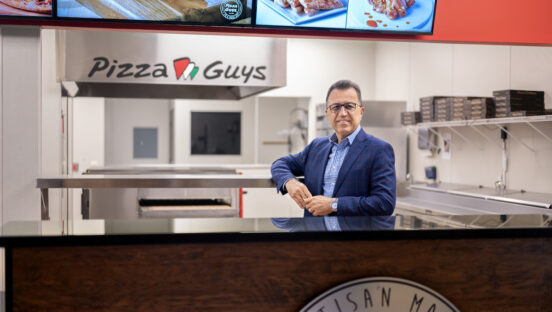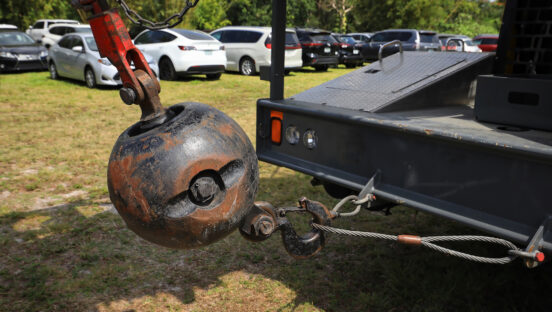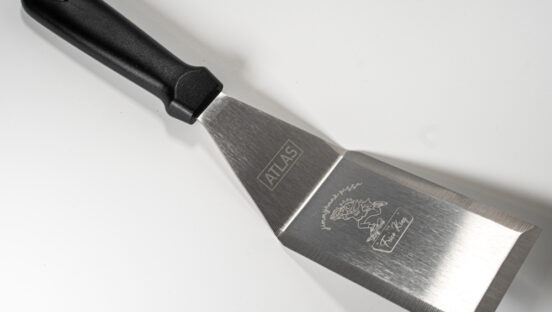CLICK HERE for a list of HOTBAG Manufacturers
Pizza…it's become an American staple, but how did it become a 30 billion dollar a year industry? The answer is most likely because pizza operators like you figured out ways to deliver a hot meal right to customers' doors. Would the pizza industry have evolved into what it is if the delivery guy handed you a cold pizza? Probably not. In the quest to put a hot, fresh pizza in the hands of hungry and demanding customers, pizza operators created the need for a new industry of innovative thinkers to manufacture pizza delivery products and they have delivered…the hot bag.
In the days of old, pizza delivery guys only had a few unconventional ways to deliver hot food. Some wrapped pizza boxes with blankets to keep them hot until they reached their destination. Others used Styrofoam coolers. Oh, don't forget those old, metal Sterno boxes that funked up the car with the smell of burning Sterno fuel. These metal boxes were also cumbersome and a pain in the butt to deal with. Thank goodness someone built a better mousetrap.
The first versions of what is now recognized as hot bags came on the scene in the US around 1983. Some versions had been tested and used in Canada before then, but weren't that well known. What was the catalyst for the invention of hot bags? It cannot be proven, but you might blame Domino's Pizza who is recognized by most as the company who pioneered the pizza delivery industry. Delivery was their specialty. In 1980, they had 398 stores. In 1982, they were up to 831. By 1984 Domino's had 1,887 locations with sales of $626 million dollars and were employing hot bags to deliver pizzas that were 'hot and fresh from the oven.' Was it coincidence hot bags came into existence at the same time Domino's had its growth spurt? Could be.
At that time, there was only one type of hot bag to use; it was the standard thermal bag that kept heat from escaping from the pizza box. Since 1983, there have been some radical changes to the delivery bag product line and pizza operators now have several choices in what delivery method they can use. The standard thermal bag is still available and may be the most widely used, but there are also bags that use heat-retaining disk, internal electric heaters and induction heated bags that use pellets that heat up to warm the bag.

With so many choices and price ranges to choose from, which ones are best? Like any other piece of equipment, it depends on what kind of operation you have. Do you have a wide delivery range or are all of your deliveries within a ten-minute drive? Do you live in an area with extremely cold winters or in warm Southern states? Do drivers have several orders to deliver at once or are they primarily single or double delivery runs? How many bags will you need to equip all of your drivers? These answers will determine what bags will work best for you so let's look at what's available.
You can divide hot bags into two categories; those that hold or retain heat and those that provide heat. There are several styles within these categories from which to choose. Thermal bags are simply bags that hold and prevent heat from escaping. Among those that provide heat, some have disks that are preheated, which are inserted in the bag, and some have internal heaters that are plugged in to AC outlets or cigarette lighters. The last style are induction heated hot bags which are placed on a counter mounted unit and heat up pellets inside the bags. Let's look at each one.
Thermal Bags
These are bags that simply retain the heat from the pizza. Advantages here are they are among the most widely used and have no internal heating elements, which can fail, and they cost less to purchase. The first basic ingredient to look at in thermal bags is the material used in construction. This is important for several reasons. You want a bag that is durable and will last, but also want one that will stay clean and sanitary.
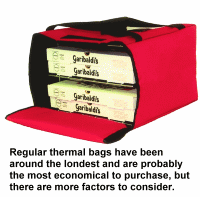 The basic materials used are nylon, vinyl or Cordura". The advantage to using vinyl is that it is inexpensive, but you get what you pay for. Vinyl is cheap, but not very durable and it has a tendency to trap moisture. With pizza, moisture in the delivery bag is your enemy. It causes the crust to become soft and moist and lose its crispness. One thing vinyl bags can be used for is an inexpensive marketing tool. You can sell them as delivery bags for carry out orders and let customers use them each time they come back for a carry out order. This is great for promotions where customers get a discount each time they bring the bags back for carry out orders. These bags can also work if you have to have delivery bags, but are operating on a shoestring budget.
The basic materials used are nylon, vinyl or Cordura". The advantage to using vinyl is that it is inexpensive, but you get what you pay for. Vinyl is cheap, but not very durable and it has a tendency to trap moisture. With pizza, moisture in the delivery bag is your enemy. It causes the crust to become soft and moist and lose its crispness. One thing vinyl bags can be used for is an inexpensive marketing tool. You can sell them as delivery bags for carry out orders and let customers use them each time they come back for a carry out order. This is great for promotions where customers get a discount each time they bring the bags back for carry out orders. These bags can also work if you have to have delivery bags, but are operating on a shoestring budget.
Nylon bags are a step up from vinyl. They are more durable and in most cases can be washed. Nylon also holds printed logos longer, but the biggest advantage is they breathe better. They allow some of the moisture to escape or wicks it away which helps keep the crust crispier. This is the most widely used material in delivery bags.
"PMQ was recently contacted by an industry insider with some additional statements about hotbags we feel should be included in this article. The main point to this additional text is to bring to light specific points concerning linings. Here are some of the comments you may want to consider about hotbags and linings.
"Vinyl lining or vinyl-backed lining is a material that causes condensation to form inside. The outside of the bag has nothing to do with how the inside of a bag breathes." "Vinyl backed nylon inside, this does not 'BREATH.'" "Embossed PVC laminated to either polyester or nylon material has a huge benefit as it is stain resistant." "Cordura is a very strong material, but it will not stop a bullet, Cordura is the coating that goes on the back of the nylon which gives the material more strength."
Strength is a major factor in construction of all delivery bags and the best choice here is Cordura". This is the same stuff used in the construction of bulletproof vests. The material's strength is important because bags that carry multiple pizzas usually have a metal internal frame for stacking. Cheaper material will develop holes or tear and the last thing you want is to be continually replacing bags because they tear up too fast. Cordura" also breathes like nylon. The thing to look at in this material, along with nylon, to determine its strength is the denier, which is represented by a number. The higher the denier the stronger it is. Anything above 500 denier can be considered good quality and below 500 denier is lower quality.
Disk-Heated Bags
These bags have disks that are heated prior to being inserted into the bag. The advantage here is a lingering heat source inside the bag. In regular thermal bags, the heat is gradually pulled from the pizza and box and retained inside the bag. A cold bag means more heat is pulled from the pizza. Those that use disks have heat already in the bag meaning less, if any, heat is pulled from the pizza. Generally speaking, most disks hold their heat for at least an hour before they need to be 'recharged.' Therefore, the advantages with this style are a constant and sustained heat source other than the pizza and less heat pulled from the product that's inserted. Advantages for heated disks are they require no cigarette lighter to keep them hot, they can fit in almost any existing bag, bags don't need to be pre-warmed and there are no cords or internal elements which can fail.
There are considerations for disk-heated bags. While you can buy bag systems that come with the disk, you can also buy disk systems that upgrade regular thermal bags into disk-heated bags. A concern here is of the disk falling out. Ways to remedy this problem are to have some pockets sewn in or use some type of holding system such as Velcro. Another thing to remember and train your employees to do is to make sure the disks are hot. If employees do not recharge the disks, then you have defeated the purpose of buying them. In addition, since most disks require about 30 minutes to heat from a cold start, you have to make 'charging' them a routine task when opening the store. Once fully heated, they usually take only ten minutes or so to recharge.
Internally Heated Bags
OK, so you don't want a regular thermal bag nor do you want a bag that requires drivers to replace or recharge heated disks, then here's your next choice. In recent years, technological advances have created the internally heated hot bag. These bags have wire elements that run through the top, bottom or both top and bottom of the hot bag. They are plugged into a cigarette lighter and can maintain temperatures of 170 degrees as long as they are plugged in to a power source. The advantages to these bags are they can produce and hold heat and there is no pre-warming required as they heat up in just a few minutes. Another advantage is since the bag is already hot, moisture is pushed out of the bag.
Because they have internal heating units, some may not have as much insulation as disk-heated or regular thermal bags. That makes it very important to stress to drivers to plug the bags in or else you just spent a lot of money for nothing. Because they have electrical components, they are usually slightly higher in cost per bag. Average life of these bags is two to four years. Another thing to consider is that they require all of your delivery vehicles to have working cigarette lighter sockets or they may require the additional purchase of power units, but if you want a delivery bag that holds a constant hot temperature, these are the ones you will need.
Induction Heated Bags
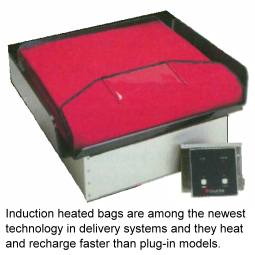 Induction heated bags are the newest advance in hot bag technology. They employ the use of pellets that are heated by magnetic waves. The pellets are enclosed in a heat resistant pouch in the bottom of the bag. These bags have some advantages over the other types of heated bags. First, they do not have cords that can be lost or not plugged in by drivers. They also heat up quite fast, usually in about three minutes from a cold start and recharged in a few seconds. To heat the bags, the driver simply places the bag on top of a device that is about the size of a counter scale. The pellets are magnetically heated and can hold a pizza at 160 degrees for about 45 minutes.
Induction heated bags are the newest advance in hot bag technology. They employ the use of pellets that are heated by magnetic waves. The pellets are enclosed in a heat resistant pouch in the bottom of the bag. These bags have some advantages over the other types of heated bags. First, they do not have cords that can be lost or not plugged in by drivers. They also heat up quite fast, usually in about three minutes from a cold start and recharged in a few seconds. To heat the bags, the driver simply places the bag on top of a device that is about the size of a counter scale. The pellets are magnetically heated and can hold a pizza at 160 degrees for about 45 minutes.
Drawbacks to these bags may include the following. First, like any other internally heated bag, they must be heated and recharged or else you bought a regular thermal bag. They also require a charging stand for every 10 bags and the pellets cannot be adapted to existing hot bags.
Tips for Delivery
Here are a few tips that will help you make sure your pizzas are as fresh as possible at the customer's door. First, if you use a conveyor oven, let the pizza sit at the end of the conveyor as long as possible. Once it goes in the box and then the bag, it can start steaming and lose its crispness or start cooling down. This is especially true with pizzas that have a lot of veggies, which release a lot of moisture. If you use bags with internal heaters or disks, make sure all of your drivers know how important it is to keep them plugged in or hot disks inserted.
Be sure that the bags you purchase have handles that are well balanced. If the driver grabs a handle that isn't, the pie can slide to one side or the other and then there is a problem. Make sure the bag has good internal supports because if it doesn't the bag or handles will tear. Also, remember that you are delivering hot, steaming food. Keep the bags as clean as possible because you don't want to make anyone sick and you don't want a driver to open a nasty bag at the door exposing customers to weeks of pizza drippings.
Sources for Delivery Bags
Now that you know a little more about delivery bags, you may want to do some shopping around. PMQ suggests contacting several bag manufacturers before you purchase anything. Narrow your choices down to four or five and see which ones work best for you. Also, contact other pizza operators and see what their experiences have been and which ones they think perform well. To help you in comparison-shopping we have some delivery bag manufacturers listed below. Listing does not constitute an endorsement by PMQ, we just want to make things a little easier for you. After all, you have more important things to do than hunt for companies and phone numbers. Good luck.
A Best Kitchen
Located in: Akron, OH
Phone: 888-204-8208
Fax: 330-535-9950
Email: sales@abestkitchen.com
Website: www.abestkitchen.com
American made: American made & Imported
Products: Thermal Bags
Bag Solutions
Located in: Aurora, IL
Phone: 866-224-8646
Fax: 630-264-1282
Email: deliverybags@aol.com
Website: http://www.deliverybags.com
American made: 'Pizza Jacket' imported from Asia
Products: Thermal Bags

Carry Hot USATM, Inc.
Located in: New York, NY
Phone: 800 9HOTBAG
Fax: 212-279-0734
Email: carryhot@aol.com
Website: http://www.carryhot.com
American made: American made
Products: Thermal Bags

Check Corporation
Located in: Troy, MI
Phone: 800-927-6787
Fax: 248-680-2326
Email: sales@checkcorp.com
Website: http://www.hotbagdelivery.com
American made: Yes
Products: Electric heated pizza thermal bags

Climax Industries
Located in: Plano, TX
Phone: 800-854-5063
Fax: 888-854-2247
Email: sales@climaxcreations.com
Website: http://www.climaxcreations.com
American made: American made (1000 pcs. Or less); Imported (1000 pcs. And up)
Products: Thermal Bags
Continental Food Products
Located in: Markhan, ON
Phone: 905-513-9690
Fax: n/a
Email: n/a
Website: n/a
American made: Canadian made
Products: Thermal bags

Cooktek
Located in: Chicago, IL
Phone: 888-266-5835
Fax: 888-266-5329
Email: customerservice@cooktek.com
Website: http://www.cooktek.com
American made: American made
Products: Induction heated pizza thermal bags
CoverTex
Located in: Port Huron, MI and Brampton, ON (Canada)
Toll Free: 800-968-2310
Phone: 905-799-1016
Fax: 905-799-0953
Email: info@covertexcorp.com
Website: http://www.covertexcorp.com
American made: American made: Therm-o-Pouch made in North America; CoverTex has affiliates in Asia that can custom manufacture for large quantity orders
Products: Thermal Bags,Magnets,Pallet Covers

Igloo Commercial Products
Located in: Houston, TX
Phone: 800-324-2653
Fax: 713-935-7763
Email: n/a
Website: http://www.igloocommercial.com
American made: Imported
Products: Thermal Bags
Keeper Thermal Bag Co., ©Inc
Keeper Thermal Bags
Located in: Crystal Lake, IL
Phone: 800-765-9244
Fax: 815-479-0225
Email: n/a
Website: http://www.keeperthermalbags.com
American made: American Made
Products: Thermal bags

National Marketing
Located in: Livonia, MI
Phone: 800-994-4664
Fax: 734-266-2121
Email: nmisales@nminc.com
Website: http://www.nminc.com
American made: American made
Products: Thermal Bags and Electric heated pizza thermal bags
Native American Bag Company
Located in: Sanford, NC
Phone: 800-842-4539
Fax: n/a
Email: danlussier@msn.com
Website: n/a
American made: American made
Products: Thermal bags
Q Sales and Leasing
Located in: Hazelcrest, IL
Phone: 708-331-0094
Fax: 708-331-0096
Email: bhaberko@qsales.com
Website: http://www.qsales.com
American made: American made
Products: Thermal bags
TCB Manufacturing
Located in: La Porte, IN
Phone: 800-523-8715
Fax: 219-324-7124
Email: info@tcb-bagmfg.com
Website: http://www.tcb-bagmfg.com
American made: Yes
Products: Thermal bags
Thermal Bags by Ingrid
Located in: Gilberts, IL
Phone: 800-622-5560
Fax: 847-836-4408
Email: info@thermalbags.com
Website: http://www.thermalbags.com
American made: American made
Products: Thermal bags
VERSA-FLEX
Versa-Flex
Located in: Cleveland, OH
Phone: 800-837-7235
Fax: 216-631-1005
Email: isew4it@aol.com
Website: http://www.versa-flex.com
American made: American made
Products: Thermal bags and Electric heated pizza thermal bags

